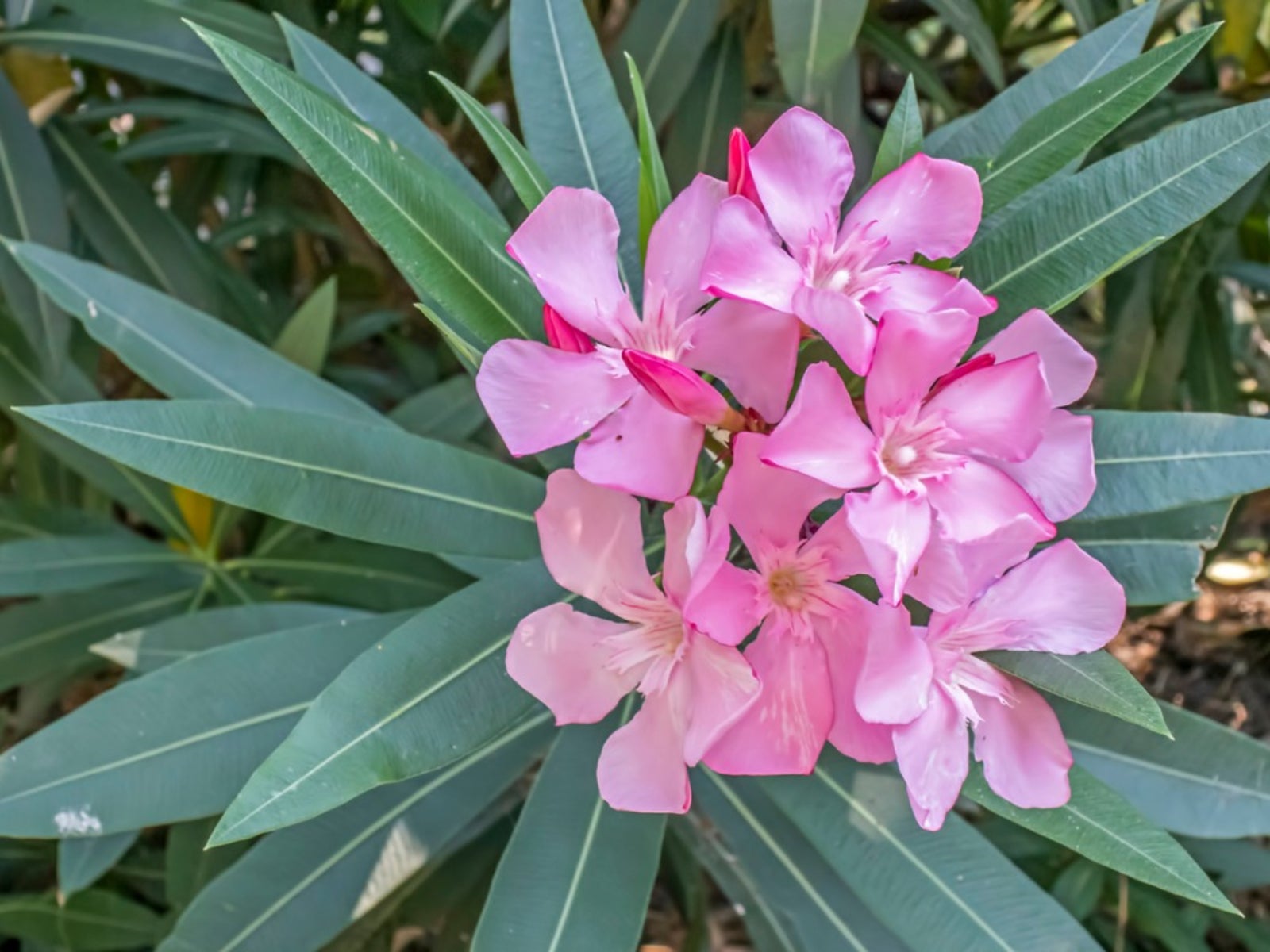Oleander Winter Care: How To Overwinter An Oleander Shrub


Oleanders (Nerium oleander) are large, mounded shrubs with beautiful blossoms. They are easy care plants in warmer climates, both heat and drought tolerant. However, oleanders can be severely damaged or even killed by winter cold. Even winter hardy oleander bushes can die if the temperatures drop precipitously. You can forestall damage to your plants if you learn how to overwinter an oleander. Read on for tips on oleander winter care.
Care of Oleanders in Winter
Oleanders are big shrubs. Most grow to 12 feet (4 m.) tall and 12 feet (4 m.) wide, and some shoot up to over 20 feet 6 m.). This doesn’t mean that they can survive cold winters without help though. Winterizing oleander plants is possible, wherever you live.
Oleanders are hardy in USDA plant hardiness zones 9 through 10. This means that they can withstand the cold winter weather in those zones.
Some winter hardy oleander bushes, like the cultivar ‘Calypso,’ can thrive in USDA zone 8. However, in zone 8, care of oleanders in winter is more difficult. You’ll have to take extra steps to help your shrub survive.
Oleander winter care in zone 8 begins in fall. When you start winterizing oleander plants in this zone you need to cut back the shrub in autumn by half. Do this while the temperature is not yet too cold.
Then layer on some 4 inches (10 cm.) of organic mulch over the root area of the plants and cover the remaining foliage with a sheet when the temperatures dip below zero. Watering once a week in winter helps keep the plant from freezing.
How to Overwinter an Oleander
If you live in even colder zones, winterizing oleander plants means bringing them inside in the coldest months. Start by cutting the bush back severely, by some two-thirds, before cold weather arrives.
Gardening tips, videos, info and more delivered right to your inbox!
Sign up for the Gardening Know How newsletter today and receive a free copy of our e-book "How to Grow Delicious Tomatoes".
Then dig carefully around the roots of the shrub. When you can free the roots, pot them up in a container with good soil and drainage. Move the pot into a sheltered area that still gets sun, like a garage with a window or porch. Give the same treatment to plants already growing in pots.

Teo Spengler is a master gardener and a docent at the San Francisco Botanical Garden, where she hosts public tours. She has studied horticulture and written about nature, trees, plants, and gardening for more than two decades. Her extended family includes some 30 houseplants and hundreds of outdoor plants, including 250 trees, which are her main passion. Spengler currently splits her life between San Francisco and the French Basque Country, though she was raised in Alaska, giving her experience of gardening in a range of climates.
-
 5 Tough Urban Trees That Thrive In Cities – Top Picks For Urban & Suburban Landscapes
5 Tough Urban Trees That Thrive In Cities – Top Picks For Urban & Suburban LandscapesExplore the best urban trees that will add value to even the most challenging of landscapes. Get growing with these ideas and enjoy all the benefits of trees.
By Teo Spengler
-
 7 New & Improved Cultivars Of Old-Fashioned Plants – These Aren’t Your Grandma’s Plants!
7 New & Improved Cultivars Of Old-Fashioned Plants – These Aren’t Your Grandma’s Plants!Old is new again! These old-fashioned plants have new cultivars that are sure to thrive in your garden and bring the charm factor. Neighbors will be envious!
By Mary Ellen Ellis